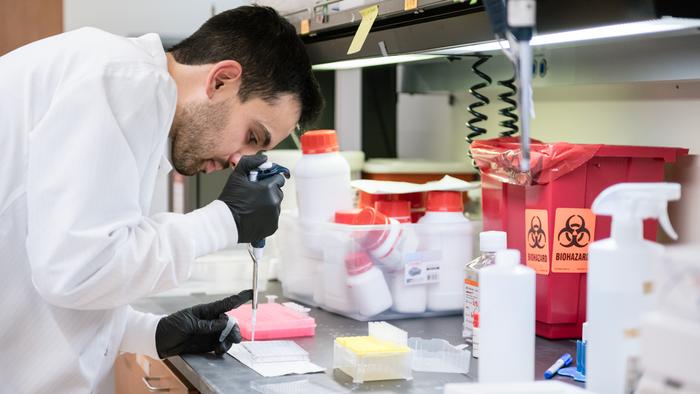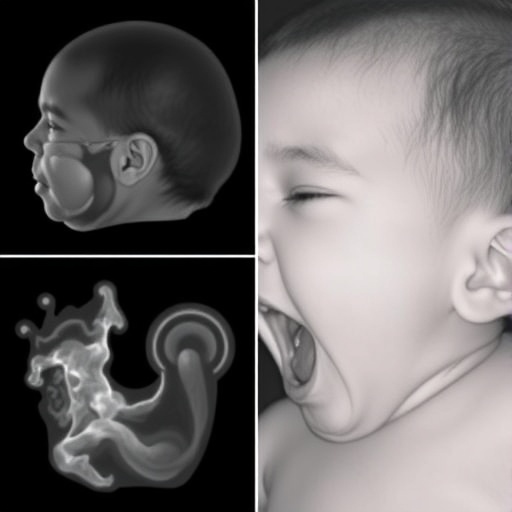
Scientists have long known that living at high altitudes, where oxygen levels are significantly lower than at sea level, can impart a range of health benefits. From improving cardiovascular health to boosting physical endurance, the potential advantages of low-oxygen environments are vast. However, for those afflicted with inherited mitochondrial diseases, such as Leigh Syndrome, these benefits transcend mere health improvements; they could mean survival. These particularly devastating conditions, often resulting in death before adulthood, currently lack effective treatments. But cutting-edge research from the Gladstone Institutes has unveiled a groundbreaking drug that mimics the physiological benefits of low-oxygen atmospheres, offering fresh hope to patients and families grappling with these life-threatening disorders.
The newly developed compound, dubbed HypoxyStat, has shown remarkable efficacy in preclinical studies. In a recent experiment conducted on mice with Leigh Syndrome—a genetic disorder that significantly hampers mitochondrial function—treatment with HypoxyStat resulted in astonishing improvements. Mice that received this innovative therapy experienced a life expectancy that tripled, coupled with notable reversals in debilitating symptoms, including severe brain damage and muscle weakness. In a field where options have traditionally been limited, these findings suggest that this drug may not only extend life but potentially enhance the quality of life for sufferers of mitochondrial diseases.
One of the key obstacles in treating mitochondrial diseases lies in the dysfunctional energy production processes of cells. In Leigh Syndrome specifically, cells inadequately harness oxygen to generate energy, leading to toxic levels of unused oxygen accumulating in tissues. This excess oxygen can wreak havoc, killing cells and exacerbating symptoms. Traditionally, researchers explored the potential of low-oxygen environments as a therapeutic measure, revealing that conditions akin to those found at altitudes of 4,500 meters (approximately 14,764 feet) could alleviate symptoms by preventing this toxic accumulation of oxygen. However, relocating patients to high altitudes is impractical, limiting the effectiveness of this approach.
Dr. Isha Jain, a prominent Gladstone Investigator and senior author of the study published in the esteemed journal Cell, emphasized the need for alternative methods to achieve similar therapeutic effects without subjecting patients to the rigors of altitude. Recognizing the limitations of environmental manipulation, Jain’s team set out to explore molecular solutions. Their unique approach centered on hemoglobin, the protein responsible for oxygen transport in the blood. The hypothesis was simple yet counterintuitive: by increasing hemoglobin’s affinity for oxygen, it would deliver less of it to tissues, effectively mimicking the effects of low-oxygen environments.
The collaboration with Maze Therapeutics, a biotechnology company based in South San Francisco, enabled the team to identify the chemical compound already known to increase hemoglobin’s oxygen-binding affinity and subsequently named HypoxyStat. This drug had originally been designed for treating sickle cell anemia, but its potential for application in mitochondrial diseases like Leigh Syndrome became evident through rigorous testing. HypoxyStat not only limited excess oxygen delivery to tissues but also showed promise in halting and even reversing the progression of the disease.
What stood out in the research was not only the drug’s preventative capabilities but also its therapeutic potential once symptoms had manifest. Mice that began receiving HypoxyStat later in life, when major symptoms had already developed, experienced notable reversals in their conditions. For example, severe brain lesions, muscle weakness, and behavioral impairments significantly improved with consistent administration of the drug. This significant finding opens up new avenues for therapeutic intervention, suggesting that even once significant damage has occurred, recovery may still be possible.
The implications of this research extend beyond mitochondrial diseases. Jain notes the potential versatility of HypoxyStat; its principles may apply to other conditions that could benefit from reduced oxygen levels, including a variety of neurological and cardiovascular disorders. Furthermore, the research could catalyze the development of new pharmacological strategies aimed at manipulating oxygen transport in more than one direction—some drugs may one day be designed to enhance tissue oxygen delivery when needed, significantly improving patient outcomes in various medical scenarios.
The field is on the cusp of a potential revolution in how we approach not just mitochondria-based disorders but broader applications of hypoxia-based therapies. The notion of gas-based therapies—consolidated into powerful, targeted drugs—represents a paradigm shift in treating not only rare diseases but potentially common health issues that remain difficult to address with conventional methods. As the research continues, the scientific community eagerly anticipates the next steps in this promising journey.
For the innovative minds at the Gladstone Institutes, this is not just a theoretical exercise but a matter of life and death for many patients suffering from terminal conditions. They are actively pursuing second-generation versions of HypoxyStat to fast-track clinical testing. Considering the potential of these developments, the hope is that patients grappling with mitochondrial diseases could soon have access to a safe, controlled intervention that dramatically transforms their prognosis.
As research unfolds and clinical trials begin, the scientific community remains vigilant about the risks and challenges of introducing such novel therapies. Ethical considerations surrounding patient safety, long-term efficacy, and implications for broader healthcare practices must always be prioritized. Still, this trailblazing work offers significant hope for individuals and families affected by mitochondrial diseases—a change that could redefine treatment paradigms for generations to come.
In conclusion, the work conducted by Jain and colleagues serves as a remarkable testament to the power of innovative research in transforming the landscape of medicine. By rediscovering and repurposing existing compounds, scientists are not only addressing immediate health needs but are also paving the way for future breakthroughs in our understanding of how oxygen impacts cellular function on a mechanical level. What lies ahead is a tantalizing possibility that medical science can adapt and evolve, ultimately unlocking solutions for even the most daunting health challenges.
Subject of Research: Mitochondrial diseases and therapeutic interventions
Article Title: HypoxyStat, A Small Molecule Form of Hypoxia Therapy that Increases Hemoglobin-Oxygen Affinity
News Publication Date: February 17, 2025
Web References: Gladstone Institutes, Cell Journal
References: Jain, I., et al. (2025). HypoxyStat, a Small Molecule Form of Hypoxia Therapy That Increases Hemoglobin-Oxygen Affinity. Cell. DOI: 10.1016/j.cell.2025.01.029
Image Credits: Photo: Michael Short/Gladstone Institutes
Keywords: Mitochondrial diseases, HypoxyStat, Hemoglobin, Leigh syndrome, Oxygen therapy, Biomedical research, Gladstone Institutes, Drug development
Tags: cardiovascular health improvementsgenetic disorders and therapiesgroundbreaking medical therapieshigh-altitude health benefitsHypoxyStat drug developmentinnovative treatments for inherited diseasesLeigh syndrome researchlife expectancy increaselow-oxygen environmentsmitochondrial diseases treatmentphysical endurance enhancementpreclinical studies in mice





